Considering the continued fall in print and ad revenues, paired with the rise in content consumption online, it’s no surprise that paywalls are becoming increasingly employed by content producers online. And this isn’t just a trend amongst news publishers - e-learning platforms, video and music streaming sites, content marketplaces and even brands are reaping in the benefits of moving to a paywall and subscription strategy.
In this article we'll answer:
- What is a paywall?
- What are the different types of paywalls? (freemium, metered, hard, dynamic)
- What are the benefits of using a paywall?
Interested in implementing a successful paywall strategy? Poool have a simple, flexible platform to allow you to do exactly this, and without the need for tech support at every turn!
Book a demoWhat is a Paywall?
A paywall restricts access to content and creates a value exchange between the publisher and their audience.
Specifically, a user is blocked by a paywall and required to pay a subscription fee in order to gain access to your content.
For example, the video streaming giant Netflix employs a paywall to gate their content, allowing only those who pay a subscription fee to watch films and series on their platform. Equally, the Financial Times has become well-known for their tough paywall model that, differently to the majority of news journalist websites, don’t allow users to read any part of an article without subscribing first.
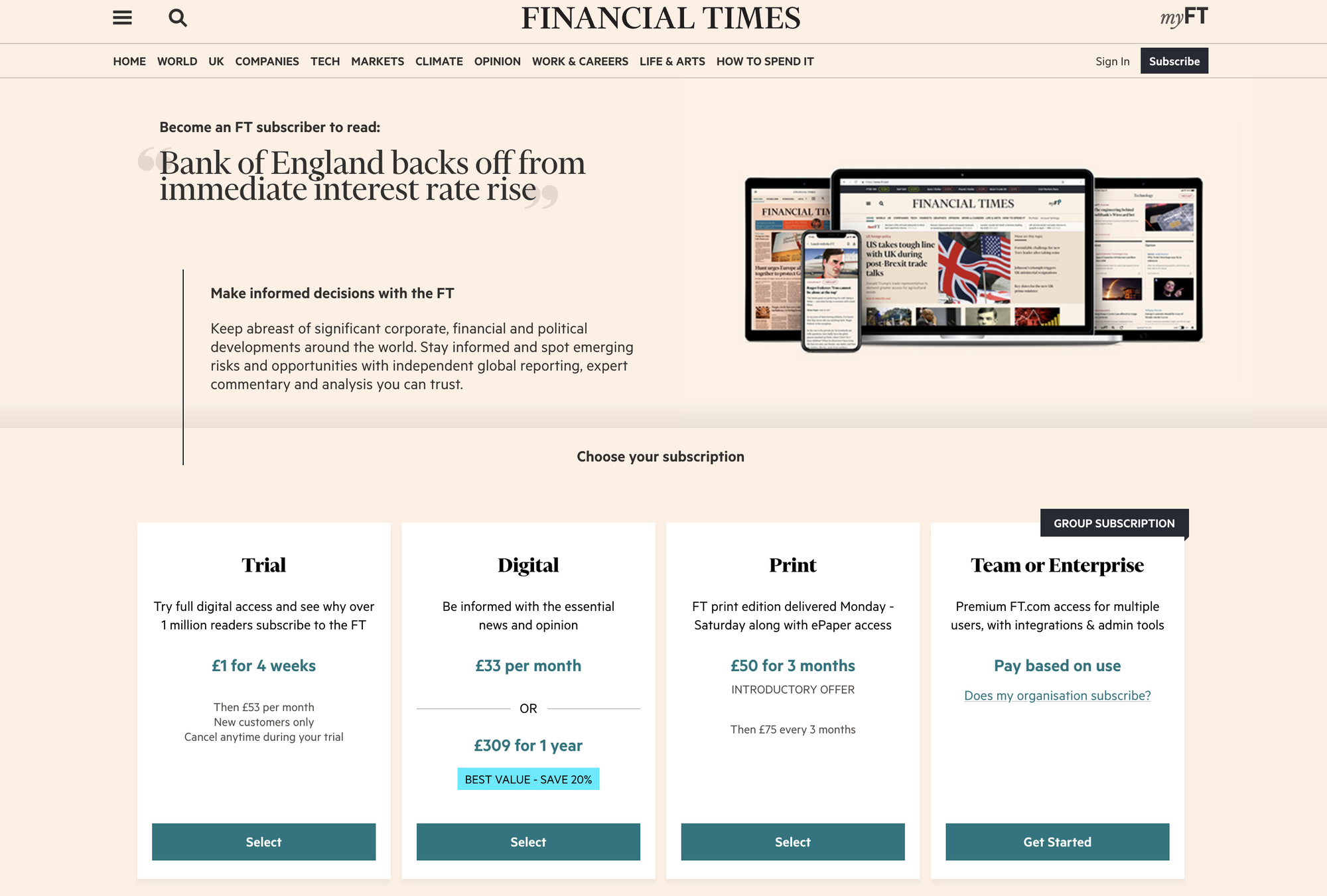
Although fairly new in the content-producing world (the NYT only adopted a paywall strategy in 2011), users are now being faced with paywalls on a wide variety of media sites, with the COVID-19 pandemic causing this number to increase even further.
What's more, not only is the number of publishers adopting this strategy growing, but the amount of content being placed behind a wall by each media is also on the rise. Our Digital Media Review found that whilst only 1 in 6 articles were blocked by a wall in 2018, this went up to 1 in 3 by the start of 2020.
What are the different types of Paywalls?
4 high level models of paywall exist:
- Freemium
- Metered
- Hard
- Dynamic
Note however that other forms are beginning to emerge and two models can be combined into a hybrid paywall.
What is a freemium Paywall?
In this model, some content is free and accessible to all users whilst the rest is hidden behind a wall and only available to paying subscribers.
An example of this is the French publisher Le Monde. Around 37% of articles produced are considered 'premium' and are reserved for subscribers only (figure from 2018, according to digiday.com). Without subscription, a reader will be cut off after a few paragraphs and presented with the paywall.
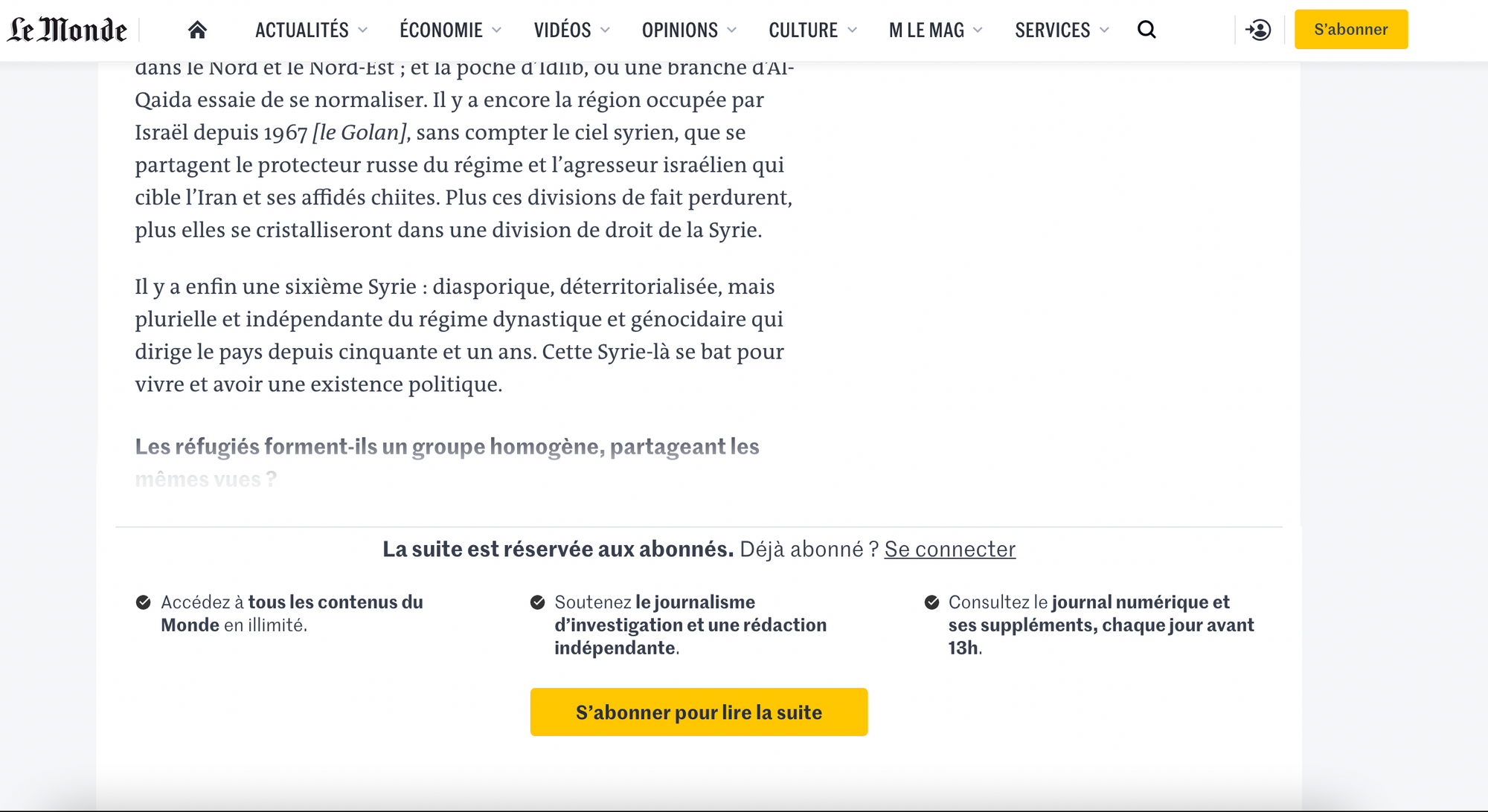
‘The rest is reserved for subscribers’ - Le Monde’s paywall cuts you off with their paywall on premium content.
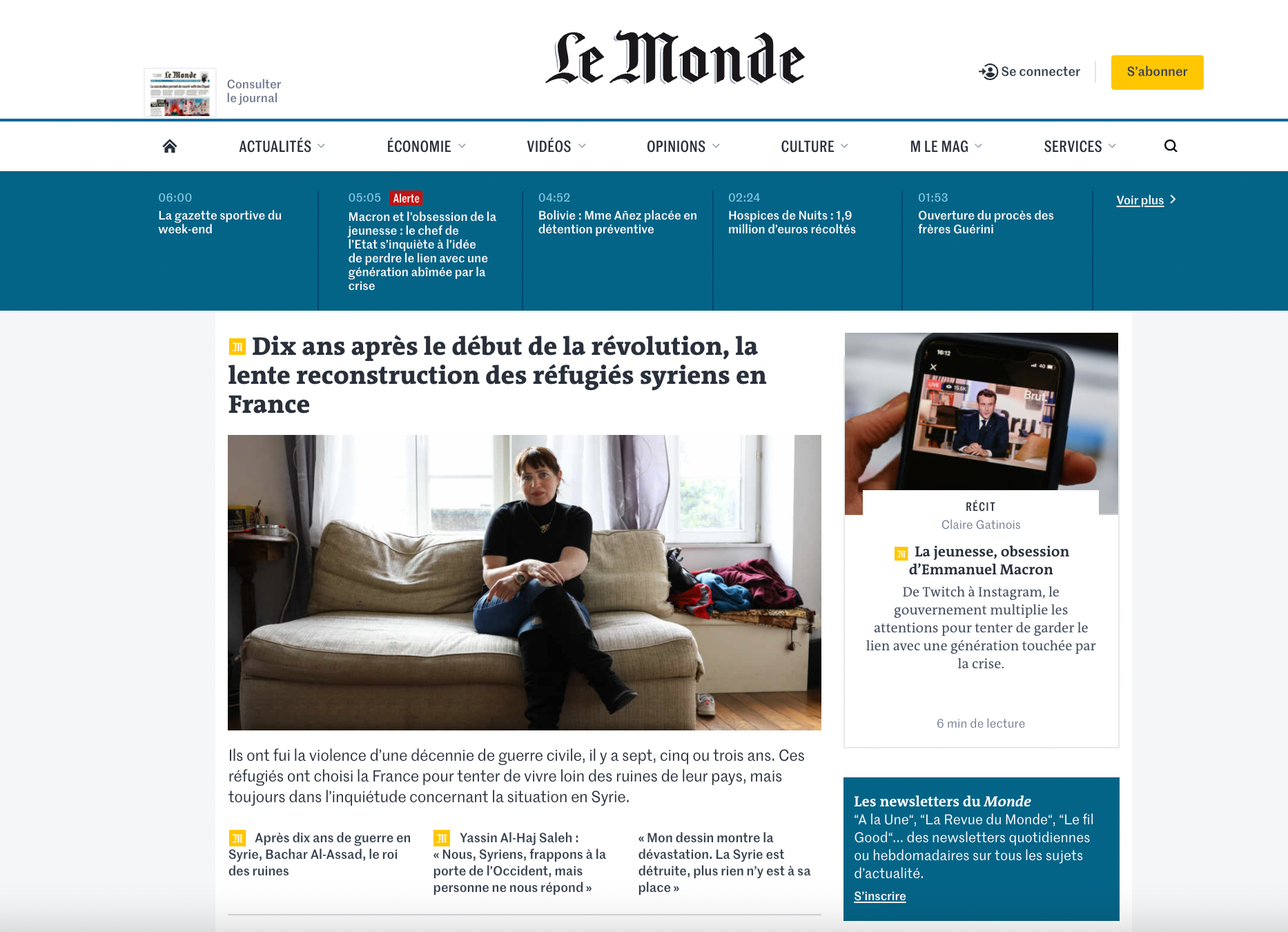
Premium content is given a yellow tag and placed next to free articles, highlighting the value in subscribing to readers.
What is a metered paywall?
With a metered paywall, all content needs to be paid for, but a non-subscriber will be able to access a limited number of articles within a certain period for free, e.g. 3 articles a month. Publishers will generally tighten their limit over time to encourage subscription.
The New York Times has a metered paywall, which arguably saved the newspaper from failure. Launched in 2011, it was one of the first of its kind and, with its success in monetizing online, led the way for other online publishers to ask readers to pay for content in the digital era.

They’ve additionally integrated a registration wall into the user journey towards subscription, asking users to register on their site in exchange for one article.
Other publishers employing this metered paywall model include Medium and Harvard Business Review, both of whom employ a banner to inform users of the number of articles left to access for free until the point of being blocked by a paywall.

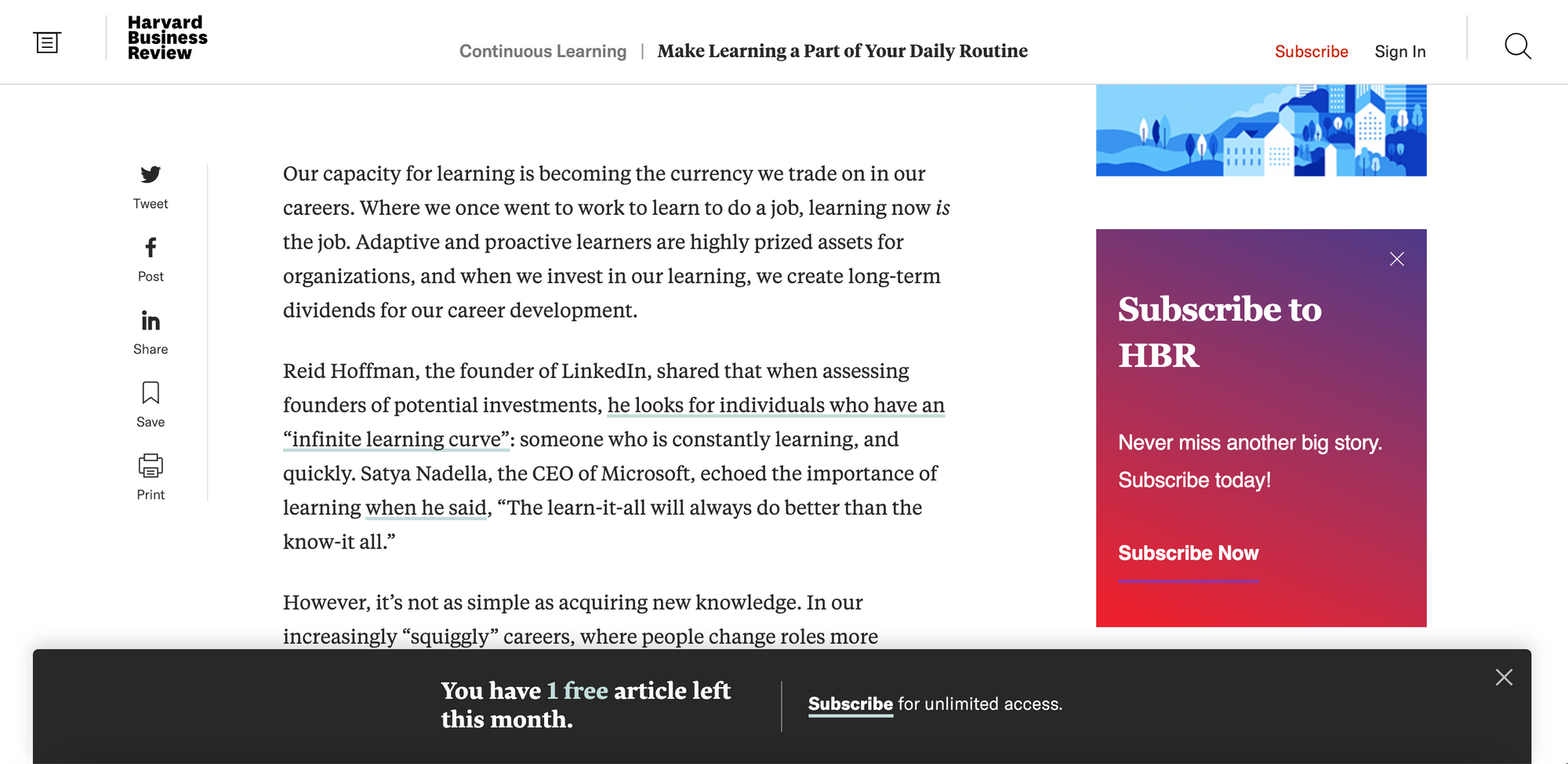
What is a hard paywall?
This is the toughest form of paywall where all content is reserved for subscribers only. For this reason, it can be quite frustrating for users and prove risky to publisher's traffic and alternative revenue streams. It is, however, currently being used successfully by a handful of content producers, most of whom have a monopoly in their market or cover very niche topics.
The Financial Times is well-known for utilizing a hard paywall, doing so successfully for 18 years thanks to the unique content focus and specific target audience. Interestingly, however, FT relaxed its paywall during the coronavirus pandemic to capitalize from the surge of online users during lockdown. This allowed readers to sample its premium content that has always been known as too good to not be paid for, leading to FT reaching its end-of-year subscription goals within 3 months.
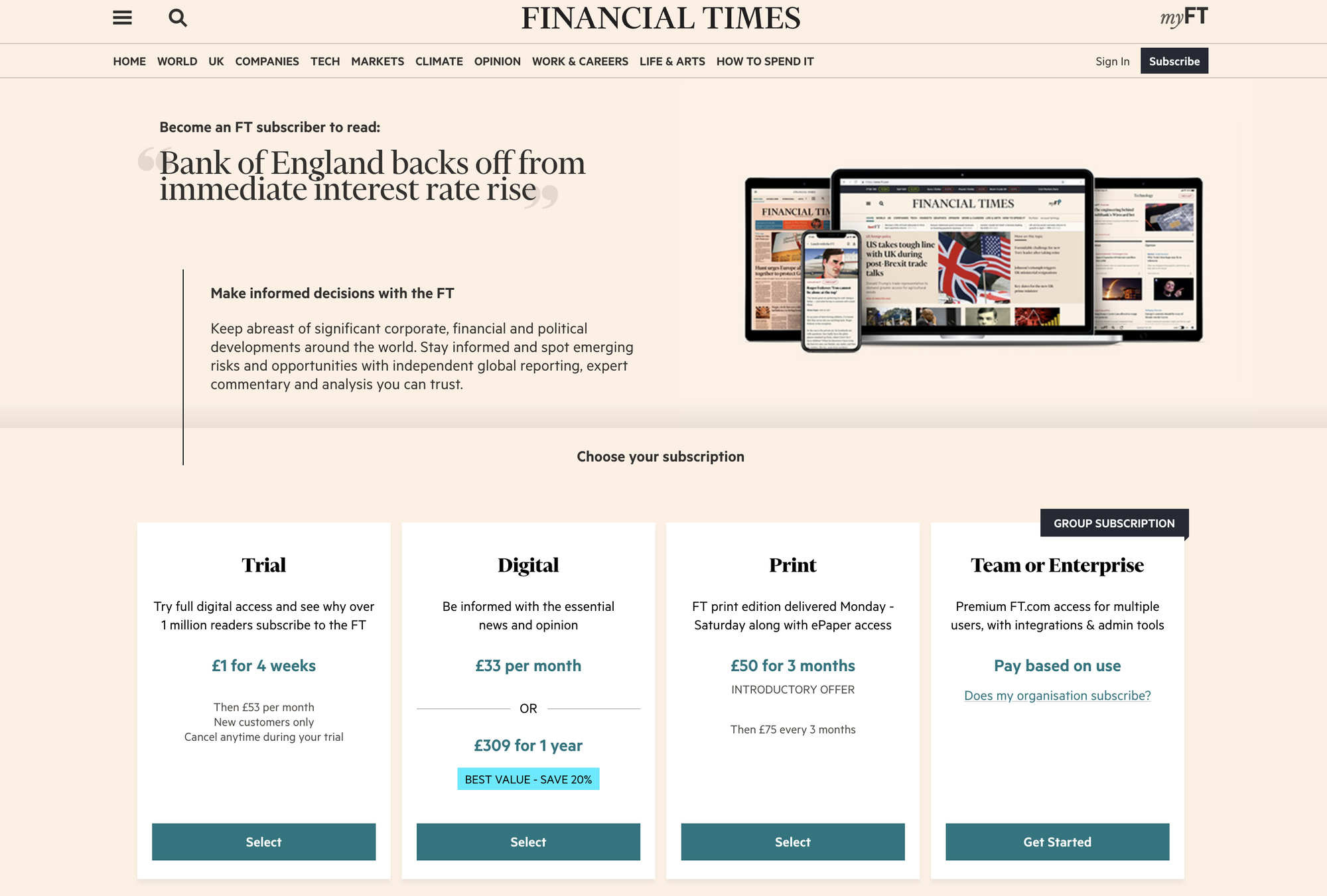
What is a dynamic paywall?
Unlike the rigid paywall systems that we’ve seen so far, a dynamic paywall segments your audience and allows a publisher to create different paywall journeys for each type of user. It is a highly data-driven strategy that recognizes that there is no one-size-fits-all system for every individual user. Importantly, the audience can be segmented based on any variant chosen by the publisher, such as propensity to subscribe (level of engagement), device used, location or type of content.
This paywall arguably gives you the greatest chance of converting the most readers as each individual can be presented with a paywall that is suited to their behavior and propensity to subscribe. For example, showing a volatile reader a hard paywall as soon as they enter your site will likely turn them away for good. If, however, you tempt them with a free article if they sign up to your newsletter, and another if they create a free account, then they might be more inclined to subscribe as you’ve been able to show what content you have to offer.
For example, the Poool Dashboard allows publishers to segment audiences based on engagement level (or in fact any variable they desire) and create adapted journeys for each grouping. Users are placed in either the Volatile, Occasional, Regular or Fan segment and presented with a journey that maximizes chances of conversion.
Alternatives Economiques, for instance, has integrated Poool's solution into their site, building an engagement journey for users made up of a newsletter wall followed by a paywall.
The newsletter wall is the first step, aiming to form a content consumption habit in the user's routine. It also has the added value of collecting email addresses, an important data point for marketing campaigns and targeting.

This is then followed, on the next article, by a paywall which blocks content and requires subscription to pass through. Cleverly, they've made the most of the Stripe integration with Poool to integrate payment into the paywall itself, leading to a 40% increase in conversion rates.
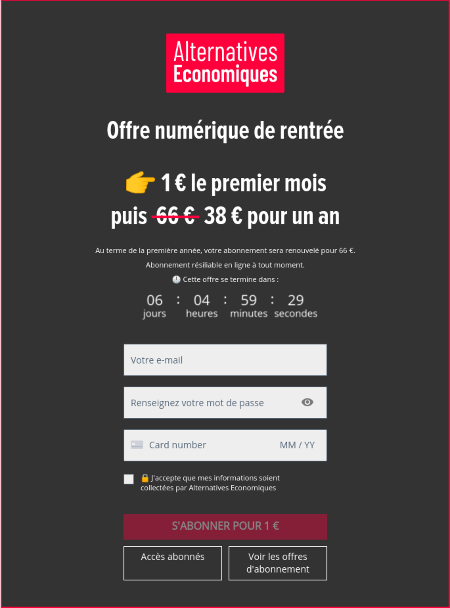
Interested in doing something similar and converting your audience into leads, members and subscribers? Book a free demo and meeting with the team!
You may also be interested in:

What other types of walls exist?
More varied wall systems are beginning to emerge to match the different goals of content-producers online.
Registration walls ask users to create a free account on a publisher's website in order to access content.
Cookie walls require someone to give their consent to cookie and tracking or select an alternative (such as paying to subscribe or creating a free account).
Hybrid walls are a mix of different conversion strategies within a single wall. For instance, EBRA employs a hybrid newsletter and paywall:
- Increase engagement through newsletter inscription
- Encourage & facilitate conversion into a subscriber via the paywall section
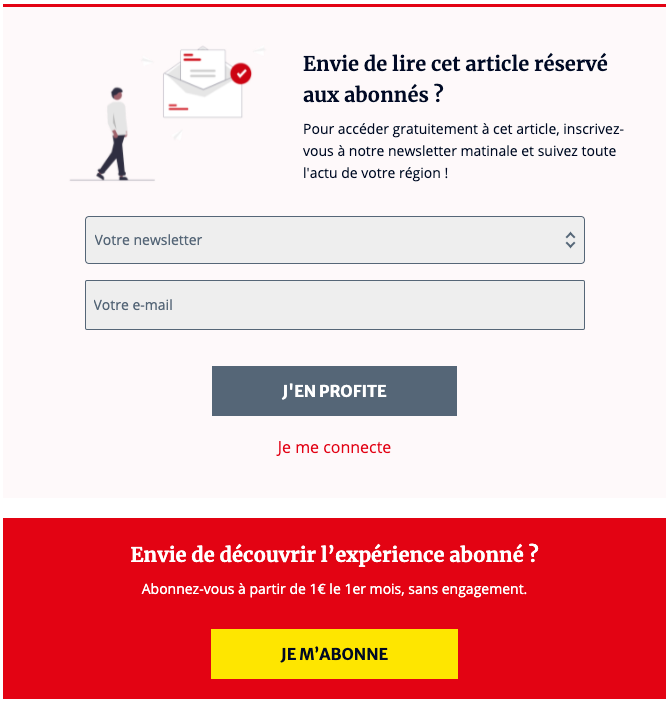
Why employ a Paywall?
The benefits of integrating a paywall are endless and it’s becoming increasingly necessary for content creators to do so, not only to monetize from what they produce but also to compete against others in the market.
1 - Diversify your revenue streams.
Monetization from a paywall is perhaps the most obvious and important benefit for a business. It can allow you to turn your most loyal consumers into business by developing premium offers than provide added value in exchange for the subscription cost. For content producers who already employ a subscription strategy, integrating a paywall into your site will significantly increase conversion rates and so help to monetize your content. What's more, contrary to what most people think, when integrated correctly, a paywall won't have any negative impact on page views, bounce rates and, importantly, ad-based revenue. Therefore, a paywall not only allows you to diversify and increase income but do so without damaging any existing revenue streams.
2 - Achieve multiple goals simultaneously.
As we’ve learnt, a paywall could be employed to not simply encourage subscription but also to increase engagement, collect 1st party data (solving the challenge of the cookieless future and increasing ad-based monetization through targeting) and personalize a user's experience on your website thanks to audience segmentation. A paywall is therefore a tool that you can employ to achieve a wide variety of business goals aside from simply subscription monetization.
3 - Learn about your audience and their behaviors
As users login and interact with your paywall, you’ll be able to collect first-party data, learning about how they behave and what makes them subscribe. With the end to cookies fast approaching, having a data-informed strategy that involves gathering data that you own, that's of a high quality and directly relevant to your audience is essential for thriving in the future internet world.
Aside from directly collecting data through registration or subscription, carrying out A/B tests on your paywall will allow you to gain valuable insights into what makes your audience convert, providing insights that can be user to inform decisions across your business.
For more adapted advice and to hear about how Poool can provide the tools to launch a paywall and subscription strategy and make it a success, book a meeting and free demo with the team!
If you enjoyed this article, you may also be interested in:





